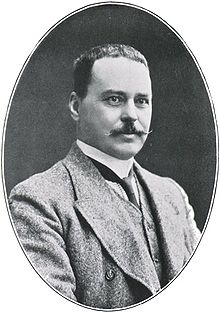User:F1287/Avian malaria
Cycle of infection[edit]
The infection cycle typically commences with immature parasites known as sporozoites, which are carried in the saliva of infected female mosquitoes, in various Plasmodium species. After being bitten by one of these mosquitoes, sporozoites either directly enter the bloodstream or deeply penetrate into the bird's skin, invading fibroblasts and macrophages and maturing into forms called merozoites. Within 36 to 48 hours, merozoites are released into the bloodstream and transported to macrophages in the brain, liver, spleen, kidney, and lung. Subsequently, the parasites commence asexual reproduction, generating copies of themselves. The new generations of merozoites infect red blood cells, where they grow, reproduce, and eventually cause the cells to burst open. This sudden release of parasites and the loss of red cells trigger the acute phase of infection. In susceptible birds, this phase is primarily characterized by anemia, accompanied by symptoms of weakness, depression, and loss of appetite. Some birds may even become comatose and die.[1]
Research on Avian malaria[edit]

Ronald Ross was born in Almora, India in 1857. Although he had no predisposition to medicine, at the age of 17 he submitted to his father’s wish to see him enter the Indian Medical Service. He began his medical studies at St. Bartholomew’s Hospital Medical College, London in 1874 and sat the examinations for the Royal College of Surgeons of England in 1879. He took the post of ship surgeon on a transatlantic steamship while studying for, and gaining the Licentiate of the Society of Apothecaries, which allowed him to enter the Indian Medical Service in 1881, where he held temporary appointments in Madras, Burma, and the Andaman Islands. In 1892 he became interested in malaria and, having originally doubted the parasites’ existence, became an enthusiastic convert to the belief that malaria parasites were in the blood stream when this was demonstrated to him by Patrick Manson during a period of home leave in 1894.[2]
In 1895, Ross embarked on a quest to prove the hypothesis of Alphonse Laveran and Manson[3]that mosquitoes were intricately linked to the propagation of malaria. On 20 August 1897, Ross made his landmark discovery in Secunderabad. While dissecting the stomach tissue of an anopheline mosquito that had fed on a malarious patient four days earlier, he found the malaria parasite, thus conclusively proving the role of Anopheles mosquitoes in the transmission of malaria parasites in humans. He continued his research into malaria in India, using a more convenient experimental model—malaria in birds. In 1898, he had demonstrated that mosquitoes could serve as intermediate hosts for bird malaria. After feeding mosquitoes on infected birds, he observed that malaria parasites could develop in the mosquitoes and migrate to the insects’ salivary glands, enabling the mosquitoes to infect other birds during subsequent blood meals.[2]In 1902, Ross was awarded the Nobel Prize in Medicine for his discovery of the mosquito transmission of malaria. [4]
Control[edit]
Anti-Microbiota Vaccine Reduces Avian Malaria Infection Within Mosquito Vectors. The vector microbiome can be assembled in different possible states, some of which may be incompatible with pathogen infection and/or transmission, while others increase vector competence or could increase or reduce vector fitness. Unraveling how to modulate these different states in a precise manner offers a powerful tool to develop novel transmission-blocking vaccines. The results support the use of anti-microbiota vaccines to target vector commensal bacteria that facilitate pathogen infection. In addition to taxon-specific effects, the community-level effects and cascading ecological impact of anti-microbiota vaccines on vector microbiota might induce infection-refractory states in the vector microbiome. Effective infection by vector-borne pathogens involves competent vectors, infective pathogens, and an infection-compatible microbiome. Mismatch of at least one of these components can result in an impaired ability of the vector to support the pathogen life cycle. For example, one strategy used to reduce the vector competence for pathogens is the genetic modification of insects that no longer transmit pathogens. The results provide strong evidence that alterations in the vector midgut microbiomes, without the need to altering vector and/or pathogen genetics, affect pathogen infection in the vector. Therefore, deviations from infection-compatible microbiomes could block transmission and disease development. Anti-microbiota vaccines can be used as a microbiome manipulation tool for the induction of infection-refractory states in the vector microbiome for the control of major vector-borne pathogens such as malaria.[5]
| This is the sandbox page where you will draft your initial Wikipedia contribution.
If you're starting a new article, you can develop it here until it's ready to go live. If you're working on improvements to an existing article, copy only one section at a time of the article to this sandbox to work on, and be sure to use an edit summary linking to the article you copied from. Do not copy over the entire article. You can find additional instructions here. Remember to save your work regularly using the "Publish page" button. (It just means 'save'; it will still be in the sandbox.) You can add bold formatting to your additions to differentiate them from existing content. |
References[edit]
- ^ "Avian malaria | Bird Disease, Causes & Prevention | Britannica". www.britannica.com. Retrieved 2023-10-26.
- ^ a b Prevention, CDC-Centers for Disease Control and (2017-03-28). "CDC - Malaria - About Malaria - History - Ross and the Discovery that Mosquitoes Transmit Malaria Parasites". www.cdc.gov. Retrieved 2023-10-19.
- ^ "The Nobel Prize in Physiology or Medicine 1907". NobelPrize.org. Retrieved 2023-10-19.
- ^ Sinden, RE (2007). "Malaria, mosquitoes and the legacy of Ronald Ross". National Library of Medicine.
- ^ Jennifer, Maye (03 March 2022). "Anti-Microbiota Vaccine Reduces Avian Malaria Infection Within Mosquito Vectors". Frontier.
{{cite web}}: Check|archive-url=value (help); Check date values in:|date=(help)
